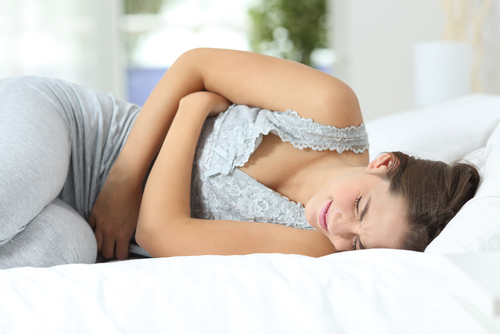Women with endometriosis report increased pain symptoms and reduced tolerance to pain even at a late reproductive age — up to age 46 — a study shows.
These findings support the long-term effects of endometriosis and highlight the need for continued therapy support.
The study, “The Long-Term Footprint of Endometriosis: Population-Based Cohort Analysis Reveals Increased Pain Symptoms and Decreased Pain Tolerance at Age 46,” was published in the Journal of Pain.
Endometriosis is a chronic gynecological disorder associated with pelvic pain and infertility. It is often under-diagnosed or there is a delay in diagnosis, which can lead to chronic pelvic pain (CPP).
Previous studies have shown increased pain sensitivity in fertility-age women with endometriosis, particularly in response to mechanical stimuli, which includes contact with objects or changes in pressure.
As endometriosis is an estrogen-dependent disorder, it is expected to subside as women approach menopause. However, there are limited population-based studies on the association between endometriosis and pain sensation and symptoms in women at a late reproductive age.
Researchers conducted a population-based cohort study to investigate whether there is a correlation between a history of endometriosis and altered pain sensation and musculoskeletal pain symptoms at age 46.
They used data from the Northern Finland Birth Cohort 1966, which contains postal questionnaire data (72% response rate), and clinical data assessing pressure-pain threshold (PPT) and maximal pain tolerance (MaxPTo).
The study included 284 women with endometriosis and 3,390 healthy women in the control group.
Results showed that 46-year-old women with a history of endometriosis had a 5.3% lower PPT and 5.1% lower maxPTo, compared with those in the control group.
Statistical analysis showed that the most significant contributors to the lowered pain threshold and tolerance, aside from endometriosis, were anxiety, depression, and current smoking status.
Women with endometriosis also reported a higher number of pain sites. Only 9.6% of women with endometriosis reported zero pain sites, compared with 17.9% of controls. Additionally, 24.8% of women with endometriosis reported five to eight pain sites, compared with 19.1% of controls. For women with endometriosis, the pain was also determined to be “more troublesome and intense.”
“This unique data revealed an altered pain sensation and a greater likelihood of reporting musculoskeletal pain at age 46 among women with a history of endometriosis,” the researchers said.
“The results imply that endometriosis has a long-term footprint on affected women, thus underlying the need for psychological support and medical treatment beyond fertile age,” the study concluded.

